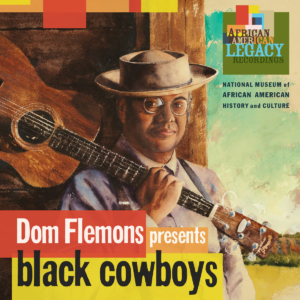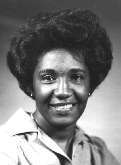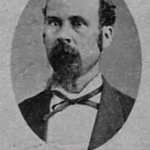Slavery and the American University
Photo: Henry Martin, born into slavery at Thomas Jefferson’s Monticello estate, began working at the University of Virginia in 1850 as a waiter and then a janitor; pictured here on the UVA lawn, 1896. (University of Virginia)
(The New York Review of Books) According to the surviving records, the first enslaved African in Massachusetts was the property of the schoolmaster of Harvard. Yale funded its first graduate-level courses and its first scholarship with the rents from a small slave plantation it owned in Rhode Island (the estate, in a stroke of historical irony, was named Whitehall). The scholarship’s first recipient went on to found Dartmouth, and a later grantee co-founded the College of New Jersey, known today as Princeton. Georgetown’s founders, prohibited by the rules of their faith from charging students tuition, planned to underwrite school operations in large part with slave sales and plantation profits, to which there was apparently no ecclesiastical objection. Columbia, when it was still King’s College, subsidized slave traders with below-market loans. Before she gained fame as a preacher and abolitionist, Sojourner Truth was owned by the family of Rutgers’s first president.
From their very beginnings, the American university and American slavery have been intertwined, but only recently are we beginning to understand how deeply. In part, this can be attributed to an expansion of political will. Barely two decades ago, questions raised by a group of scholars and activists about Brown University’s historic connection to slavery were met with what its then-president, Ruth Simmons, saw as insufficient answers, and so she appointed the first major university investigation. Not long before that, one of the earliest scholars to independently look into his university’s ties to slavery, a law professor at the University of Alabama, began digging through the archives in part to dispel a local myth, he wrote, that “blacks were not present on the campus” before 1963, when “Vivian Malone and James Hood enrolled with the help of Nicholas Katzenbach and the National Guard.” He found, instead, that they preceded its earliest students, and one of the university’s first acts was the purchase of an enslaved man named Ben. In Virginia, a small consortium founded three years ago to share findings and methods has expanded to include nearly three dozen colleges and universities across North America and two in European port cities. Almost all of these projects trace their origins to protests or undergraduate classes, where a generation of students, faculty, archivists, activists, and librarians created forums for articulating their questions, and for finding one another. (more)
‘Black Cowboys’ Sheds Light On Overlooked Music Of African-Americans Who Went West
(WBUR) “Black Cowboys” is the new album from multi-instrumentalist and songwriter Dom Flemons, a co-founding member of the Grammy Award-winning Carolina Chocolate Drops. But it’s more than a collection of songs from the Wild West — the record sheds light on the prominent but often-overlooked role African-American pioneers played in westward expansion.
Here & Now’s Eric Westervelt talks with Flemons about the music’s origins and evolution.
On the album’s songs, “One Dollar Bill,” and cultural representations of cowboys, Flemons says:
“I really wanted to approach the idea of Hollywood cowboys, and the African-American Hollywood cowboy, and just have a song that was just a real dramatic, cliffhanger-type song where there was action and adventure. There was gunplay, there was a woman that had done a guy wrong and just a lot of the elements that have won the American heart and imagination for more than a century. And I wanted to try to really make it rooted in traditional music and feature aspects of the music, like the East Texas blues songsters, for example, people like Lightnin’ Hopkins and Mance Lipscomb, Lead Belly, Henry ‘Ragtime Texas’ Thomas — those are all musicians that have pieces of the cowboy culture within their repertoires, and so I wanted to bring that into focus in addition to the stories that I had read about, so that you could get a good sense of musically where many of these cowboys in the early days were.
“Because of course, after the trail rides ended, and after the African-American cowboys were gone, the image of the cowboy was redefined as a white person, and it was about the struggle of a white savior. And that’s good and fine in and of itself, but it’s left a skewed perception of how we think about who was out there on the range, and how diverse it was in the actual old days.” (more)
Two Austin Streets Could Be Renamed For A Black U.S. Treasurer And A Former Slave
(KUT) Nine months after a white supremacist rally in Charlottesville, Va., reignited the conversation over memorials to Confederate figures, Austin City Council Members will vote on giving Robert E. Lee Road and Jeff Davis Avenue new names.
Lee was commander of the Confederate Army. Jefferson Davis was president of the Confederacy. (Some argue the street may not actually be named for him.)
“Changing this street name is an important step for healing our community, given the injustices of the past,” Council Member Ann Kitchen wrote in a press release last year.
Robert E. Lee Road, which snakes through the east side of Zilker Park past the Umlauf Sculpture Garden and Museum and the south entrance of Barton Springs Pool, could become Azie Taylor Morton Road. Morton, who died in 2003, was the first African-American to serve as U.S. Treasurer (and was a graduate of Austin’s Huston-Tillotson College).
Council members will also vote on changing the name of Jeff Davis Avenue to Will Holland Avenue, for a man who served in the Texas House of Representatives and the Travis County Commissioners Court, according to a biography written by the city. Holland was born into slavery in Marshall, Texas, in the 1840s. (more)
Frederick Douglass On How Slave Owners Used Food As A Weapon Of Control
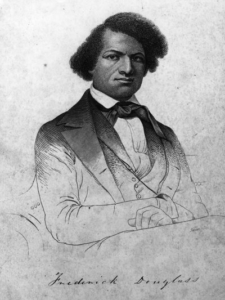
As a young enslaved boy in Baltimore, Frederick Douglass bartered pieces of bread for lessons in literacy. His teachers were white neighborhood kids, who could read and write but had no food. (Hulton Archive/Getty Images)
(NPR) (Frederick) Douglass was born on a plantation in Eastern Maryland in 1817 or 1818 – he did not know his birthday, much less have a long-form birth certificate – to a black mother (from whom he was separated as a boy) and a white father (whom he never knew and who was likely the “master” of the house). He was parceled out to serve different members of the family. His childhood was marked by hunger and cold, and his teen years passed in one long stretch of hard labor, coma-like fatigue, routine floggings, hunger, and other commonplace tortures from the slavery handbook.
At 20, he ran away to New York and started his new life as an anti-slavery orator and activist. Acutely conscious of being a literary witness to the inhumane institution he had escaped, he made sure to document his life in not one but three autobiographies. His memoirs bring alive the immoral mechanics of slavery and its weapons of control. Chief among them: food.
Hunger was the young Fred’s faithful boyhood companion. “I have often been so pinched with hunger, that I have fought with the dog – ‘Old Nep’ – for the smallest crumbs that fell from the kitchen table, and have been glad when I won a single crumb in the combat,” he wrote in My Bondage and My Freedom. “Many times have I followed, with eager step, the waiting-girl when she went out to shake the tablecloth, to get the crumbs and small bones flung out for the cats.” (more)
TIPHC Bookshelf
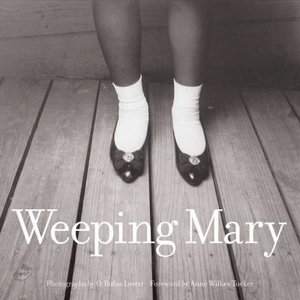 Published scholarship on black history in Texas is growing and we’d like to share with you some suggested readings, both current and past, from some of the preeminent history scholars in Texas and beyond. We invite you to take a look at our bookshelf page – including a featured selection – and check back as the list grows. A different selection will be featured each week. We welcome suggestions and reviews. This week, we offer, “Weeping Mary,” by O. Rufus Lovett.
Published scholarship on black history in Texas is growing and we’d like to share with you some suggested readings, both current and past, from some of the preeminent history scholars in Texas and beyond. We invite you to take a look at our bookshelf page – including a featured selection – and check back as the list grows. A different selection will be featured each week. We welcome suggestions and reviews. This week, we offer, “Weeping Mary,” by O. Rufus Lovett.
Small and self-contained, yet with ties to the larger world, Weeping Mary is a community in rural East Texas. The poetic mystery of its name, which local legend attributes to an African American woman called Mary who wept inconsolably over the loss of her land to a deceitful white man, drew photographer O. Rufus Lovett in 1994. Feeling a kinship with the people and the rhythms of a small Southern town like the one in which he grew up, Lovett began photographing the residents of Weeping Mary. In the decade since his first visit, he has created an impressive body of work that distills the essence of this unique, yet instinctively familiar community.
In this book, O. Rufus Lovett presents an eloquent photo essay on Weeping Mary, created in the tradition of such master photographers as Henri Cartier-Bresson, Walker Evans, and Helen Levitt. Focusing on the people of the community, especially the children, Lovett photographs with honesty and a deep empathy for his subjects. His beautifully composed images show a true eye for the telling details through which the character of an individual reveals itself. As a collection, the photographs create a portrait of a community rich in spirit, in which people are “married to this place which is theirs and appears to stand still, but which subtly moves forward with the rest of the world in the twenty-first century.”
To frame the images, America’s leading photography curator, Anne Wilkes Tucker, describes the community of Weeping Mary and offers a critical appreciation of Lovett’s work. The volume also includes a photographer’s statement and an interview in which Lovett and Tucker discuss his development as a fine art photographer and his motivations for creating this intimate portrait of Weeping Mary.
As an interpretive body of work, Lovett’s Weeping Mary photographs make a powerful statement about the human community we all share—in his words “our families, pastimes, priorities, wishes, and ideals.”
This Week in Texas Black History
Apr 23
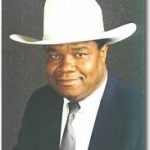 On this date in 2004, Earl Pearson, then a 28-year veteran of the Texas Department of Public Safety, was named chief of the Texas Ranger Division. With his promotion, Pearson became the first black Senior Ranger Captain and the first black DPS division chief. Pearson grew up in Rotan.
On this date in 2004, Earl Pearson, then a 28-year veteran of the Texas Department of Public Safety, was named chief of the Texas Ranger Division. With his promotion, Pearson became the first black Senior Ranger Captain and the first black DPS division chief. Pearson grew up in Rotan.
Apr 23
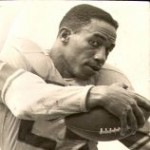 On this day in 1928, black college football great Odie Posey was born in Austin. Posey, a running back, graduated from Phillis Wheatley High School in San Antonio and then attended Southern University in Baton Rouge, La. on a tennis scholarship. Posey teamed with Harold Jones in 1947 to capture the Prairie View Interscholastic League 2A Boys’ Double state championship title. At Southern, Posey became the best running back in school history. His 1,399-yards rushing total in 1949 led the nation (NCAA Division II) and still stands as the highest single-season mark in school history. During his four years at Southern, the Jaguars were 46-2-2 (undefeated, 12-0, in 1948), won three Black College National Championships, four Southwestern Athletic Conference titles and two bowl games, including the 1948 Fruit Bowl Championship against San Francisco State University. Posey was a four-time Pittsburgh Courier All-American and a four-year All-SWAC selection.
On this day in 1928, black college football great Odie Posey was born in Austin. Posey, a running back, graduated from Phillis Wheatley High School in San Antonio and then attended Southern University in Baton Rouge, La. on a tennis scholarship. Posey teamed with Harold Jones in 1947 to capture the Prairie View Interscholastic League 2A Boys’ Double state championship title. At Southern, Posey became the best running back in school history. His 1,399-yards rushing total in 1949 led the nation (NCAA Division II) and still stands as the highest single-season mark in school history. During his four years at Southern, the Jaguars were 46-2-2 (undefeated, 12-0, in 1948), won three Black College National Championships, four Southwestern Athletic Conference titles and two bowl games, including the 1948 Fruit Bowl Championship against San Francisco State University. Posey was a four-time Pittsburgh Courier All-American and a four-year All-SWAC selection.
Apr 24
 On this date in 1944, The United Negro College Fund was incorporated with 27 member schools (now 38). Mary Branch, president of Tillotson College in Austin, helps to establish the organization. The UNCF’s mission is to enhance the quality of education by raising operating funds for their member colleges and universities, providing financial support to deserving students, and increasing access to technology for students and faculty at Historically Black Colleges and Universities (HBCUs). Both The Non-Profit Times and The Chronicle of Philanthropy have ranked UNCF among the top 10 charitable educational organizations in the country.
On this date in 1944, The United Negro College Fund was incorporated with 27 member schools (now 38). Mary Branch, president of Tillotson College in Austin, helps to establish the organization. The UNCF’s mission is to enhance the quality of education by raising operating funds for their member colleges and universities, providing financial support to deserving students, and increasing access to technology for students and faculty at Historically Black Colleges and Universities (HBCUs). Both The Non-Profit Times and The Chronicle of Philanthropy have ranked UNCF among the top 10 charitable educational organizations in the country.
Apr 25
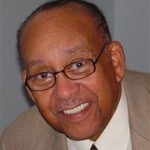 Robert Leon Wormley, who opened the first black-owned insurance agency (Wormley-Mitchell & Associates) in Austin in 1954, died on this day at age 82 in 2010. A Minneapolis, Minn. native, Wormley was a Civil Rights activist who helped picket businesses that practiced segregation and worked to improve life for Austin’s black community. He worked on poverty issues for Govs. Preston Smith and John Connelly. Wormley was the first black member of the Independent Insurance Agents of Austin.
Robert Leon Wormley, who opened the first black-owned insurance agency (Wormley-Mitchell & Associates) in Austin in 1954, died on this day at age 82 in 2010. A Minneapolis, Minn. native, Wormley was a Civil Rights activist who helped picket businesses that practiced segregation and worked to improve life for Austin’s black community. He worked on poverty issues for Govs. Preston Smith and John Connelly. Wormley was the first black member of the Independent Insurance Agents of Austin.
Click edit button to change this text.
Blog: Ron Goodwin, Ph.D., author, PVAMU history professor
Ron Goodwin is an assistant professor of history at Prairie View A&M University. Even though he was a military “brat,” he still considers San Antonio home. Like his father and brother, Ron joined the U.S. Air Force and while enlisted received his undergraduate degree from Texas Lutheran University in Seguin, Texas. After his honorable discharge, he completed graduate degrees from Texas Southern University. Goodwin’s book, Blacks in Houston, is a pictorial history of Houston’s black community. His most recent book, Remembering the Days of Sorrow, examines the institution of slavery in Texas from the perspective of the New Deal’s Slave Narratives.
Recent Posts
King of Kings
During his lifetime Martin Luther King consistently paralleled the experiences of the biblical Children of Israel and the experiences of Africans in America. As a result, he thrust himself into the role of Moses. What I find interesting in these parallels was the ultimate goal of the story. The Children of Israel, after 400 years of bondage, eventually made their way to the Promised Land. This was the message that I believe King was ultimately
Wakanda Forever — Part 2
The internet records the following regarding the financial success of the Black Panther as of March 25, 2018: Receipts grossed $631.4million in the US and Canada and a worldwide total of $1.239 billion; The film made $370.5million worldwide in its opening weekend (the 15th largest of all time); Thus far, Black Panther is the highest-grossing solo superhero film and the 3rd third highest-grossing movie in the Marvel Cinematic Universe (MCU); and In only five weeks after
Submissions wanted
Historians, scholars, students, lend us your…writings. Help us produce the most comprehensive documentation ever undertaken for the African American experience in Texas. We encourage you to contribute items about people, places, events, issues, politics/legislation, sports, entertainment, religion, etc., as general entries or essays. Our documentation is wide-ranging and diverse, and you may research and write about the subject of your interest or, to start, please consult our list of suggested biographical entries and see submission guidelines. However, all topics must be approved by TIPHC editors before beginning your research/writing.
We welcome your questions or comments. Please contact Mr. Michael Hurd, Director of TIPHC, at mdhurd@pvamu.edu.

